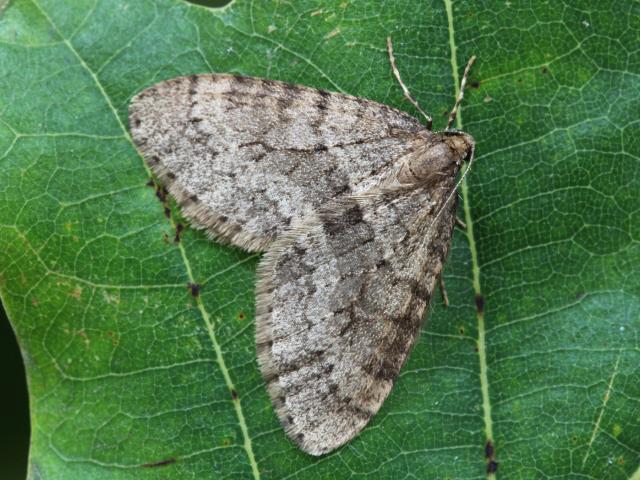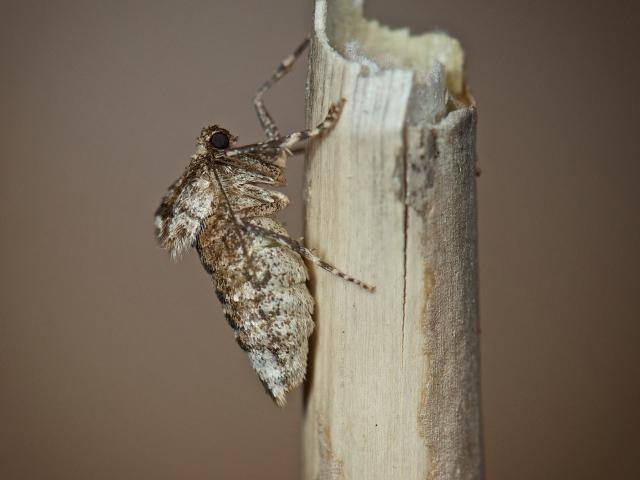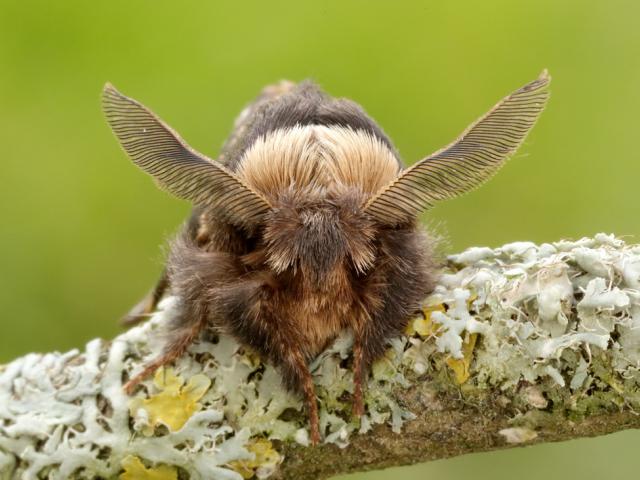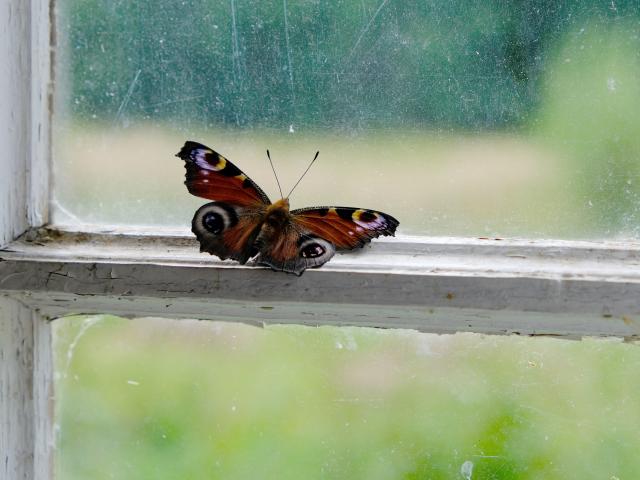Most insects in the UK take a break in the winter months. Unlike mammals and birds they can't easily heat themselves up, and their sources of food from plants dwindle. But a few hardy butterflies and moths can be seen during this time, with some moths only appearing as adults during the months when few other insects are on the wing.
Helpfully, the few moth species that do fly late in the autumn and winter often receive names that are completely to the point - there's the Autumnal Moth, November Moth, December Moth, Winter Moth and Early Moth.
While their flight times don't always match up exactly with their name, it's fair to say that they got these names for a reason.

One of the easiest to find is the Winter Moth. This moth can be seen flying in large numbers illuminated by car headlights near woodland and hedgerows between October and January, with the greatest numbers being seen in late November and December. The Winter Moth doesn't seem especially well adapted for winter - it doesn't have thick 'hair' like the December Moth, and seems a rather weak moth overall. While most moths need to warm their bodies to over 30 degrees Celsius to enable them to fly, the Winter Moth and its relatives have thrown out the rule-book here. Their body temperature is close to the temperature outside - sometimes almost at freezing point - even when flying. Research suggests that they may achieve this by having an unusually low body weight compared to the size of their wings, so their wings don't need to beat so fast to keep them aflight and their muscles don't need to be warmed up to work efficiently.
Yet it's only the males that have this trick as the females are completely flightless! Their wings have been reduced to tiny nubs, so they await the arrival of the males which they attract using pheromones they release into the air. This is also the case for related species that fly in the winter, such as the

Mottled Umber, Pale Brindled Beauty and Early Moths. Trying to fly in the cold weather with a body weighed down by eggs must consume a great deal of energy, so they've evolved to give up flying altogether!

The December Moth takes a different strategy. Unlike the fine gossamer-like wings and thin body of the Winter Moth, December Moths have thick bodies covered in long hair-like scales that provide insulation and keep the moth warmer so its muscles work as efficiently as if it had been a summer-flying species. The Rannock Sprawler is another large moth with a thick covering of 'hair' that has even been seen flying in the snow!
With all the hardship involved in flying in winter, you might wonder why they bother. A straightforward answer may be that they do this to avoid predators such as bats which tend not to feed in the coldest months.
The species that fly in autumn and winter mostly lay eggs on woody parts of a variety of trees and shrubs. The caterpillars won't hatch out until early spring, when the first tree buds burst into leaf. The emergence of the caterpillars is of vital importance to the success of insect-eating birds like Blue Tits and Great Tits. These birds have evolved to synchronise their breeding with the peak emergence of these caterpillars so there will be plenty of food to raise their broods. It can take 40,000 food items to raise one nest of Blue Tits with ten chicks inside, so getting the timing right is crucial!
Continuing climate change may threaten this remarkable relationship. Research has found that leaves of trees like oak are emerging earlier, as are the caterpillars that feed on them. Great Tits have started to breed earlier too, but it seems that they can't always bring their breeding dates forward enough to still take advantage of the peak in caterpillar abundance.

Moths like the Herald Moth and several of our typical garden butterflies like Peacock and Small Tortoiseshell spend the winter as adults. They can be found in cool, dark places but will emerge briefly if the air temperatures increase, even in early January. These butterfly species occasionally come into our homes and sheds in late summer and tuck themselves behind cupboards or amongst curtains, only to be woken up in winter when the central heating is turned on! If you find any butterflies like this in your home they should be put outside to a dry, sheltered space. Doing this on a cold day can encourage them to go back into hibernation. Sometimes butterflies can be helped back into hibernation by putting them into the fridge for half an hour, which cools them down and stimulates winter conditions. You can then put them outside in a safe place like a garden shed, and wake them in spring by bringing them outside on a sunny day. It's remarkable to watch the legs of an apparently lifeless butterfly begin to twitch before the wings snap open and they fly away!
You can help moths - and the birds - in your garden in the winter by remembering that the eggs are laid on stems and branches. So don't prune your hedges too heavily, and try to do this on a rotational basis so that some parts of the hedge remain unpruned in any given year.
Ivy growing up trees or walls provides a lot of shelter for adult butterflies and moths, and for their caterpillars. It's also a fantastic nectar source and one of the foodplants of Holly Blue butterfly caterpillars. So, if you're thinking of removing ivy, please think twice!
Help Butterfly Conservation
You can help Butterfly Conservation learn more about the impact of climate change on some moth species and to take action before its too late, by donating to our Climate Change Appeal. Thank you.


